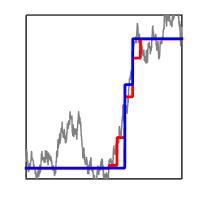B-spline implementation to find the solution of continuous domain total-variation minimization problem
Autumn 2017
Master Semester Project
Project: 00339

In MRI and other real world applications, the measurements are generally obtained through a continuous-domain transformation of a continuous-domain signal (Fourier samples for MRI case). Yet, for computational feasibility, the inverse problem formulated to numerically reconstruct the signal from these measurements, are often formulated in discrete-domain. Continuous-domain formulation of inverse problems therefore can be advantageous in this sense, provided there is a way to tackle the computational complexity of the reconstruction task. Recently in [1], the solution for inverse problems in continuous domain with Total variation regularization is found out to be non-uniform spline. To perform the reconstruction we use Green's function of the operator used in regularization, as the dictionary basis. However, this often results in ill-conditioned system matrices leading to poor convergence rate. We propose a student project to use the corresponding B-splines as the dictionary basis for the TV-regularized solution. The resultant system matrix in this case is expected to be better conditioned and an appropriate algorithm can result in faster convergence to a solution. The task will be to effectively implement this formulation and contrast it with the results of the previous formulation. The student will have to understand the theoretical background of the problem and convex optimization techniques, and then implement the formulation in MATLAB.
Prerequisites: Convex optimization
[1] M. Unser, J. Fageot, and J. P. Ward, Splines are universal solutions of linear inverse problems with generalized-TV regularization, arXiv preprint arXiv:1603.01427, 2016.
- Supervisors
- Harshit Gupta, harshit.gupta@epfl.ch, +41 21 69 35142 , BM 4140
- Michael Unser, michael.unser@epfl.ch, 021 693 51 75, BM 4.136